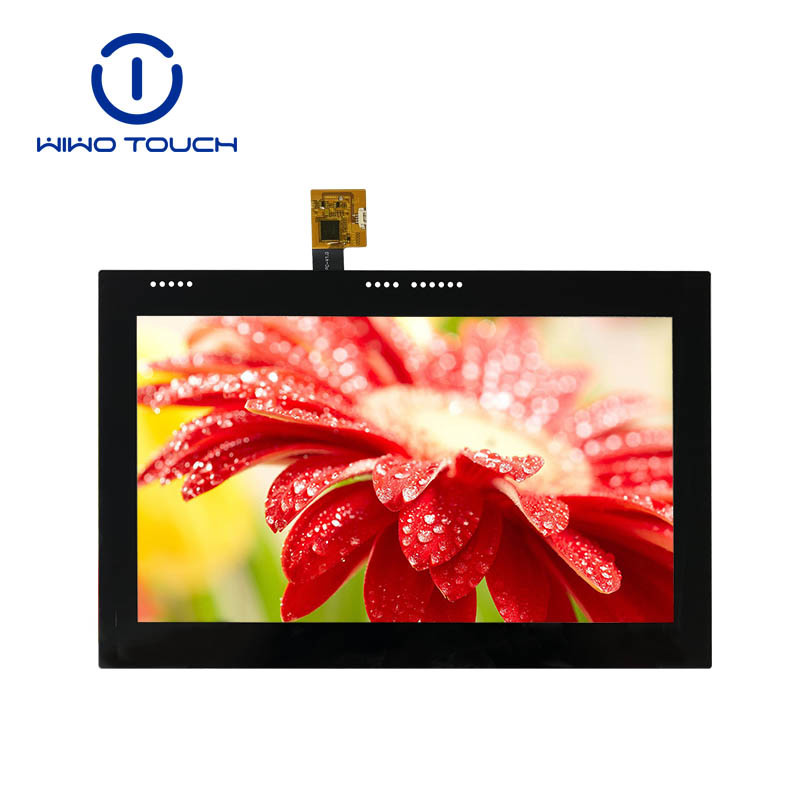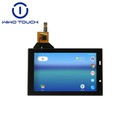UV-resistant touchscreens are those that are resistant to UV radiation and can effectively prevent UV damage to the touchscreen. This type of touchscreen is very useful in some specific environments, such as outdoor use or scenarios that involve prolonged exposure to daylight.
The main features and benefits of UV resistant touchscreens include:
Preventing touch screen aging: When exposed to UV light for a long period of time, traditional touch screens may experience aging phenomena, such as colour fading and hardening of the material. UV-resistant touchscreens use special materials and coatings that effectively block, absorb and disperse UV rays, reducing the risk of touchscreen aging.
Improve durability and reliability: Anti-UV touch screen can resist the damage of UV radiation on the surface of the touch screen and prolong the service life of the touch screen. It reduces UV-induced colour distortion and image blurring while maintaining the accuracy and responsiveness of the touchscreen.
Adapt to outdoor environment: In outdoor environment, UV radiation is strong, traditional touch screen may be disturbed, resulting in unclear picture, touch failure and other problems. UV-resistant touch panels can provide a better touch experience under outdoor conditions, ensuring the clarity of the screen and the accuracy of the touch.
Enhance user experience: The use of UV-resistant touch screen can enhance the user experience in the outdoor environment. Whether it is outdoor information query, navigation systems or outdoor games, UV-resistant touch screen can effectively reduce the visual interference caused by direct sunlight, providing a more comfortable and clear display.
UV-resistant touch capacitive screen has good resolution and touch responsiveness, and its light transmission, haze and clarity are very good. So, what is the difference between anti-UV capacitive screen and traditional touch capacitive screen:
1, the traditional touch screen light transmittance and clarity is poor
Anti-UV touch capacitive screen design structure is rigorous, to overcome the traditional touch screen low light transmission, poor clarity and other defects. Because the traditional touch screen is generally resistive contact structure, its various areas are connected together, each area of the touch each other, and anti-UV touch capacitive screen screen material is relatively high, therefore, choose it is more conducive to improving light transmission and clarity.
2. Traditional touch screen will cause poor sensitivity due to water droplets and dust.
UV capacitive screen can replace the traditional touch screen, has become the mainstream development of the industry. Traditional touch screen if you encounter water droplets and dust, the surface of the contact sensitivity is likely to be greatly reduced, while the UV touch capacitive screen built-in quartz glass protective layer, to avoid the interference of water droplets and dust .
3. Traditional touch screen screen response sensitivity is low
The traditional touch screen in the long time use often appear lag, or press the screen hard, the screen can not respond in time and other different types of problems. UV-resistant touch capacitive screen can quickly determine the location of the contact point through the difference in capacitance or the size of the current, so its sensitivity is higher than the traditional touch screen.
UV resistant touch capacitive screen has entered a new development journey, both the exterior design and internal performance design have been improved by leaps and bounds. In fact, the choice of UV resistant capacitive screen not only helps to overcome the problems of poor light transmission and clarity of the traditional touch screen, but also helps to overcome the problems of poor sensitivity and low response sensitivity of the traditional touch screen due to water droplets and water droplets Dust. and other problems.





